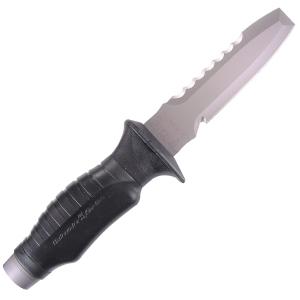Dive knives are a necessary accessory for scuba divers, but unfortunately many novice divers don’t carry them. If you’re interested in learning more about these handy diving tools, check out these six things that you need to know about dive knives.
(1) Why You Need a Dive Knife
Every year thousands of divers get caught in monofilament line, which can be extraordinarily difficult to get untangled from when you’re a hundred feet underwater. Don’t believe me, check out this great article from scuba.com about what to do if you get snagged. Additionally, thick strands of kelp can also get caught on diving gear. Lastly, though rare, you never know when you may encounter a shark while underwater.
(2) Start with a small dive knife
Just because James Bond used a huge knife in his underwater fights, doesn’t mean you need one. Dive knives can range in size from 2 inches to 6 inches, but if you are beginning diver who hasn’t used a knife underwater before, starting with the smaller knife is always preferable. Larger knives can be more awkward and difficult to handle underwater, increasing the chance of injury. It’s recommended that you start with a blade under 4 inches, if you’re purchasing your first dive knife.
(3) Choose a dive knife with a serrated edge
While dive knives are available in both serrated and non-serrated models, a serrated knife is usually preferable. Serrated blads are better at slicing through monofilament line, rope, cord or other soft materials your dive knife may get snagged in.
(4) Avoid dive knives with sharp tips
Sure, it might come in handy for the one time in a million when you have to gore a bloodthirsty Great White, but in general a spear- tip dive knife is less functional and more dangerous then a blunt-tip dive knife. Blunt knives are also usually more optimal for prying and wedging, both necessary functions when underwater.




